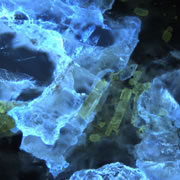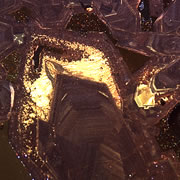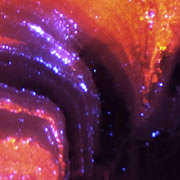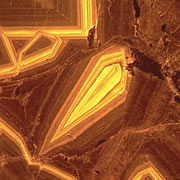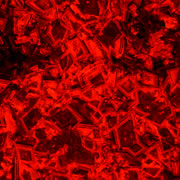(EDX) Energy-Dispersive X-ray Spectroscopy System
Image Gallery
Scientific Papers
Overview
The Energy Dispersive X-Ray Spectrometer is mounted on the top plate below the electron beam gun at the optimum position for collection of dissipated wavelengths emitting from the specimen surface in a fixed focus position. Ge is used as a standard to set the datum due to its reliability of spectra. These measurements can be made on spot sizes of 100µ and 50µ.
The system can then assess matter from; its KLM reference table, the wavelengths of substances measured and their concentration percentage.
If the systems are to be used for comparative analysis then the Spectral displays can be viewed collectively on a larger split screen.
Specifications
- ATP Top Plate with multi-aperture beam stop
- Control box and psu for ATP
- Amptek Axis SDD X-ray detector with better than 139ev resolution at Fe55 and psu
- High quality MCA with nucleonic preamp with adjustable gain/shift/shaping times
- Laptop computer
- MCA control and analysis software

Technical Diagrams
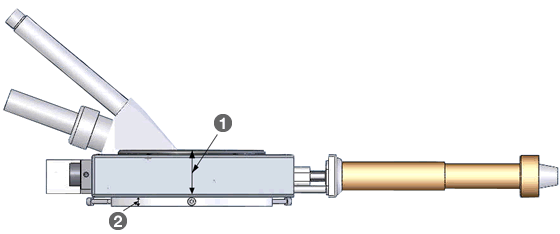
- 1: 45mm free space between longest lens and stage mount. Lens must have 5mm working distance (TP5 top plate) or 9mm working distance (TP9 and ATP(shown)). Lens turret should preferably be able to face forward.
- 2: Stage attachment ring: If your stage does not strip down to allow for this fixing, an additional 12mm must be added to allow for a fixing plate with attachment ring.

- 3: At 100mm the rear arm must allow clearance for vacuum pipe.
- 4: 100mm clearance from optical centre to rear arm of microscope.

- The microscope stage must be able to withstand the 4.5kg mass in the Z axis of the cathodoluminescence stage and vacuum pipe drag, without focus drift.
How the EDX works

When we get Cathodoluminscence from our geological samples we are also getting X-rays as a by product. These X-rays are characteristic of the elements in our sample. In the same way that optically we get different colours coming from our sample due to trace elements, we get different energy X-rays from each of the elements in our sample. By positioning an energy sensitive X-ray detector close to the sample we can collect a proportion of these X-rays and then sort them into their different energies using a multi-channel analyser. Exactly the same way as an EDX system does in a SEM or Micro probe. They can then be processed mathematically to determine how much of each element is present in the sample.
Because we have a large flood beam we would be collecting X-rays from the entire electron bombarded area of the sample. Whilst this can be useful, for example in bulk sample analysis of geological slides, it is not recommended for EDX collection on the microscope as currently the scanning window of 3mm, if used for collection, would exceed the systems capacity. The system has a 3mm window which is used to select the general area and then a secondary target can accurately centre objective fields of 50/100µ for collection by the detector.

The X-ray detector is a silicon drift detector (SDD), the same as is used in most modern SEM's. Not the older liquid Nitrogen type but peltier cooled and as such requires very little maintenance. It has a resolution of better than 139eV. Like all X-ray detectors it requires very careful handling. The front of the detector is protected as long as it is inserted into the ATP which is specially designed to accept and protect the detector. Unlike detectors in SEM's there is no danger of the stage running into the detector and damaging the delicate 5µ beryllium window. The particular detector used has a very high count rate capability of up to 5 x 105 counts per second with a peak to background ratio of 3000.
An easy to use software package is supplied with the system which enables easy calibration of the detector system using a pure Ge sample (supplied). The detector is sensitive to all X-ray energies above Na.
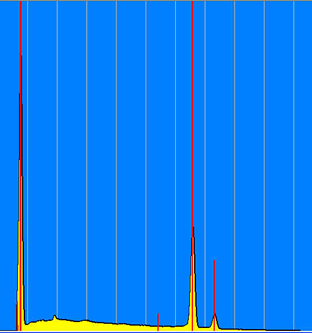
Once a spectrum has been collected it can be quantified by the built in analysis system. The quality of the collected data has been shown to be comprable to that collected on a typical SEM EDX system.
The EDX system consists of the Special Analytical Top Plate with selective beam aperture changer. This allows the beam size to be controlled easily and accurately and is specifically designed to accept the Peltier cooled detector. It is NOT supplied without the detector as each manufacture's detector is different and would require a specially designed ATP. Along with the detector a computer with high performance MCA matched to the detector and control-analysis software is supplied.
The EDX system can be supplied with the Mk5 CL stage and control unit specially designed to work with it, or fitted as a upgrade option to both Mk5 CL stages or Mk4 CL stages. Unfortunately it is not suitable for connection to older CL units.

